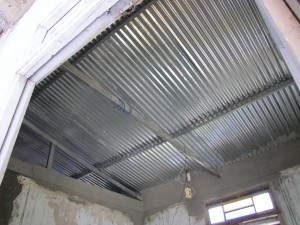25th October 2013 Havana, Cuba
Hurricane Sandy – one year later
This week marks the one year anniversary since Hurricane Sandy swept through eastern Cuba, destroying homes and crops, damaging schools and health clinics, leaving eleven people dead and thousands of people homeless. In the early hours of October 25th the hurricane swept over Santiago de Cuba, Guantanamo and Holguin before continuing northwards and towards New York. Santiago and Holguin are the country’s second and third most populated provinces so a huge number of people were affected – up to 3 million according to the UN, many of them from vulnerable groups such as the elderly, young or pregnant women.

In the aftermath of the hurricane, my government had two immediate concerns – how we could support the Cuban government to respond to the humanitarian needs and whether any British people had been affected and needed help. Holguin is one of the main tourist centres for British tourists in Cuba and we estimated more than 2,200 were on holiday there when the hurricane hit. Fortunately, the tour operators who bring the majority of tourists to Cuba have some excellent staff in Holguin who immediately rushed to the resort to see what the situation was and how they could help. One of them sent an email the day after, giving his impressions:
‘I finally managed to travel to Guardalavaca this morning via an alternative road that goes through towns such as Baguano and Banes. Due to the hundreds of trees blocking the road, mudslides and many other obstacles the journey took over 2 and a half hours from Holguin city to Guardalavaca. The journey down was very sad, to say the least. Reminiscent of when Ike hit Holguin a few years ago. A lot of villagers in these small towns have either lost their homes completely or partially. The road from Holguin Airport to the resort area is still blocked and while they have been working all day to get rid of the trees and debris, the floods from an overflowing reservoir and river cover almost 150 metres of road – the water is waist-deep and chest-deep in some areas.’
Thankfully no British tourists were badly affected but of course many Cubans were and needed support either from their neighbours, the Cuban authorities or from other organisations such as the Catholic Church or Cuban Red Cross. International support to the Cuban government and Cuban organisations came from a number of sources. The UN received $5.5m from the CERF – the excellent Central Emergencies Response Fund which was set up to allow the UN to respond to crises immediately and to which the UK provides about 20% of funding. Later, the UN raised a further $15m through a consolidated appeal. The EU provided €4m and individual countries, including many of Cuba’s close allies in ALBA, made contributions either in cash or in kind. Blankets, food and mattresses were flown in. The UK’s Department for International Development provided £850,000 (approximately $1.4m, bringing our total contribution to over $3m) to the Cuban Red Cross to improve access to drinking water and to provide temporary housing and household items for over 15,000 people.

I visited Santiago and Guantanamo in January this year to see how quickly the area had recovered. Only three months since the storm had passed it was apparent that a significant number of houses in Santiago still needed roofing sheets and that building materials were in short supply. I was told that the electricity supply had been restored by the end of 2012 – a team had come in from Pinar del Rio at the other end of the island to help out – and the town clean-up had been quickly and successfully completed. Kids were back in school but, inevitably, damaged school buildings were being still rebuilt. The sugar, banana and coffee crops had all been badly affected. Rehabilitation was slow but steady. Interestingly, people had already learned lessons from the disaster – for example, the Red Cross was bringing in ‘hurricane straps’ that would clamp roofing sheets more firmly to a roof’s wooden beams and provide more protection in future storms.
A year later and we are again in the middle of hurricane season in the Caribbean. Fortunately, and I hesitate writing this in case it might provoke the wrath of the hurricane gods, a serious storm hasn’t (yet?) hit Cuba in 2013. There may still be one. And if there isn’t one this year, there probably will be one next year. What’s important is that the country is ready – and Cuba is widely commended for being well-prepared – and that the communities affected can quickly pick themselves up and get the support they need. We’ll do everything possible to provide the support we can in future and I’m sure many other donors will too.
Dear Tim, I ´m very sorry but there is a small mistake in my 1st. comment.
Correct is of course : “If more as 3 Millions of people were a f f e c t e d …”.
Best wishes, Ingo-Steven
Dear Tim, what shoking and cruel pictures ! But pls. let me asking you the following Q.:Do such strong Hurricanes like Sandy coming and coming and so on…AGAIN ? What can a small ISLAND like Cuba do for survival?
I mean if more as 3 millions of people have been killed, if there are 10000´s victims sleeping on streets in Holguin , La Habana and even in Guantanamo(,didn ´t US-President Barack Obama to close this camp in 2009 ? ) To conclude: I was so much impressed by the inhabitants of the cities of Santiago and Guantanomo itself .What courage,how much bravery to starting over again. Respect!
Ingo-Steven Wais , Cayrgdid /Cymru
Best wishes+take care, Hawyl faur + bora te